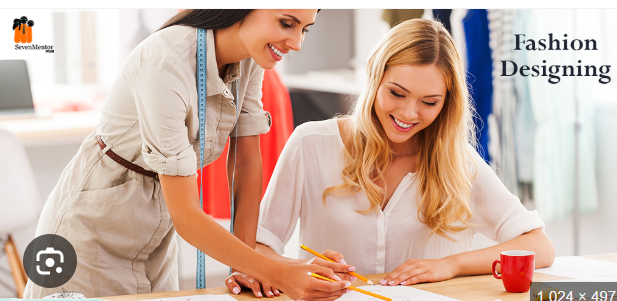
A fashion designer is a creative professional responsible for conceptualizing, designing, and bringing clothing, accessories, and footwear to life. Their work involves combining art, technical skills, and an understanding of trends to create functional and aesthetically pleasing designs. Fashion designers play a central role in the fashion industry, from initial sketches to the production process.
Roles and Responsibilities of a Fashion Designer
-
Research and Trend Analysis
- Study fashion trends, fabrics, colors, and market demands.
- Research customer preferences, historical fashion, and future projections to stay ahead of trends.
- Please visit our website: – Fashion Designing Classes in Pune
-
Design Development
- Create sketches or digital renderings of design ideas.
- Select colors, fabrics, textures, and patterns to match the vision.
- Develop mood boards to inspire or communicate a collection’s theme.
-
Pattern Making and Prototyping
- Work with pattern makers or create patterns to shape garments.
- Oversee or participate in the creation of prototypes or samples to test designs.
-
Fabric and Material Selection
- Choose materials that complement the design, balancing quality, cost, and functionality.
- Collaborate with suppliers to source fabrics and trims.
-
Collaboration with Teams
- Work closely with seamstresses, pattern makers, and textile manufacturers to bring ideas to life.
- Collaborate with marketing, production, and sales teams to align designs with business strategies.
-
Garment Fittings and Adjustments
- Oversee fittings to ensure proper drape, comfort, and aesthetic appeal.
- Adjust designs based on feedback and functional requirements.
-
Production Oversight
- Supervise or coordinate the manufacturing process.
- Ensure designs are produced efficiently and meet quality standards.
-
Presentation and Marketing
- Showcase collections through fashion shows, lookbooks, and promotional campaigns.
- Work with stylists, photographers, and magazines to promote designs.
-
Budget Management
- Manage costs for materials, production, and labor to stay within financial limits.
- Please visit our website:-Fashion designing Course in Pune
-
Sustainability and Innovation
- Many designers now focus on sustainable practices, such as using eco-friendly fabrics and ethical production processes.
Types of Fashion Designers
Fashion designers can specialize in different areas, including:
- Haute Couture: Custom, high-end, handcrafted garments for exclusive clients.
- Ready-to-Wear (Prêt-à-Porter): Mass-produced, designer-branded fashion for retail.
- Mass Market: Designing affordable clothing for large-scale retail.
- Footwear Designers: Focus on shoes and related accessories.
- Accessory Designers: Design bags, belts, scarves, hats, and jewelry.
- Costume Designers: Create costumes for movies, theater, TV, and events.
Skills Required
- Creativity and Artistic Skills
- Technical Knowledge: Sketching, pattern-making, sewing, and draping.
- Attention to Detail
- Knowledge of Fabrics and Textiles
- Time Management
- Trend Awareness and Forecasting
- Communication and Teamwork
Work Environment
Fashion designers may work for:
- Fashion houses
- Retail brands or boutiques
- Freelance as independent designers
- The entertainment industry (costume design)
Fashion designers bridge the gap between art and functionality, influencing how people express themselves through clothing and style.
Are you curious about how to become a fashion designer or want to explore specific fields like haute couture, ready-to-wear, or accessories?
Please visit our website:- Fashion designing Training in Pune